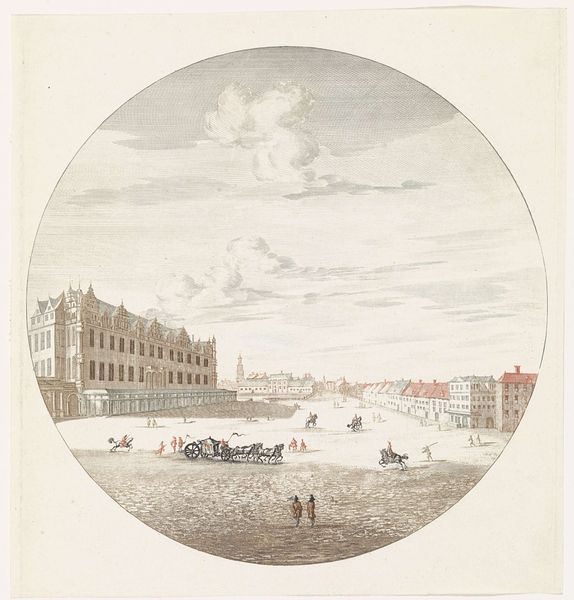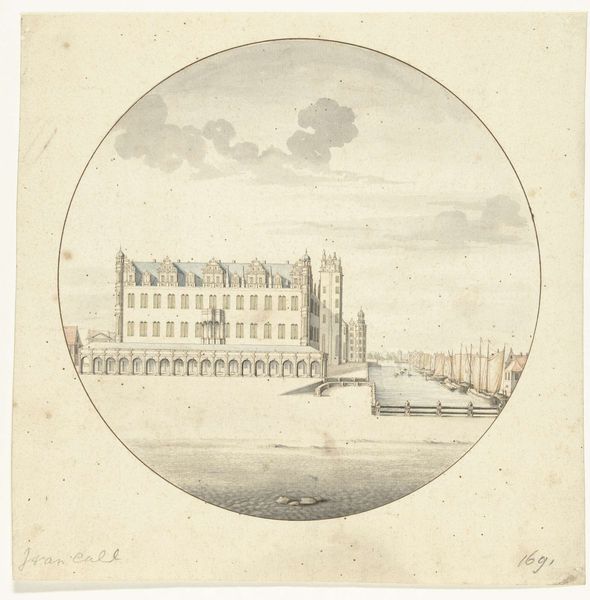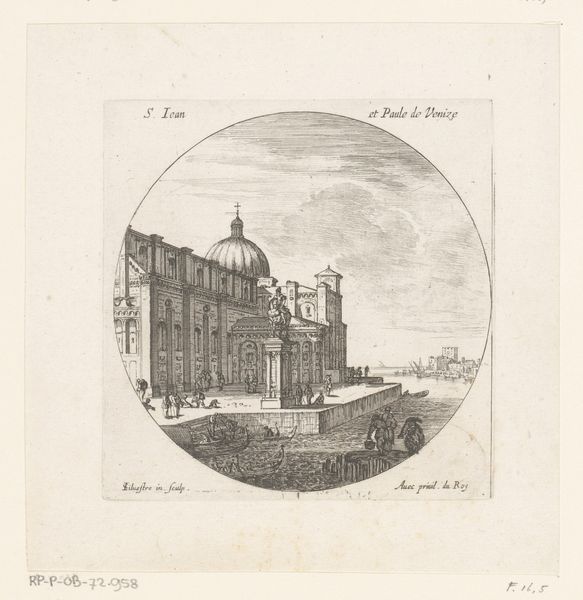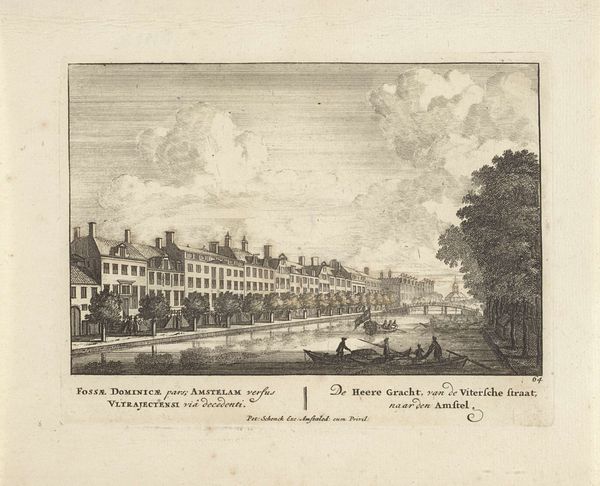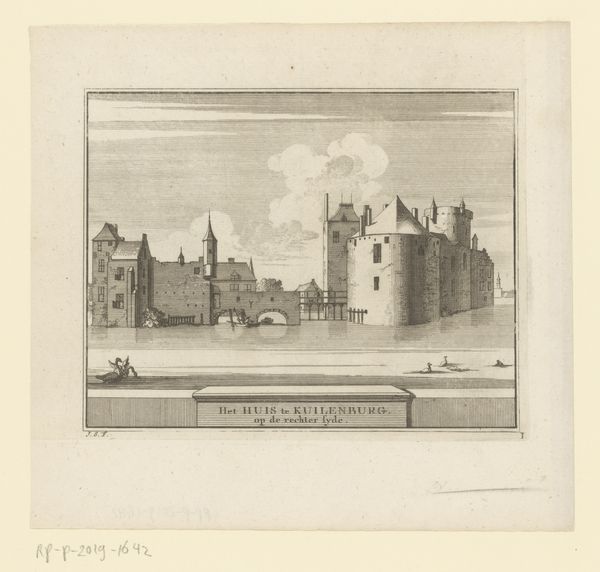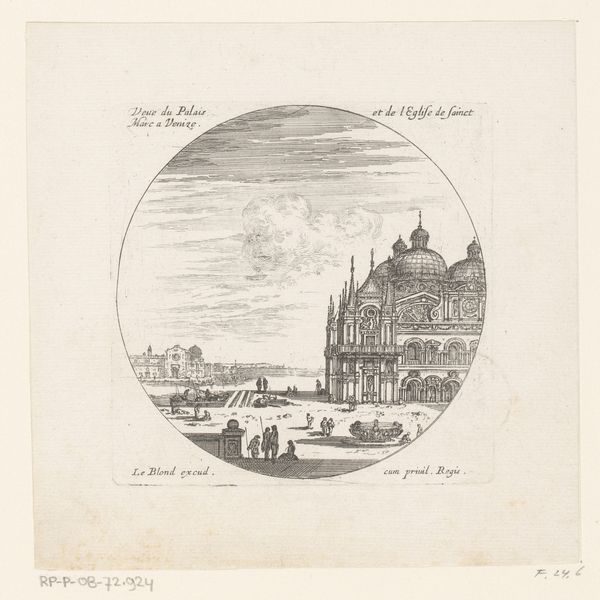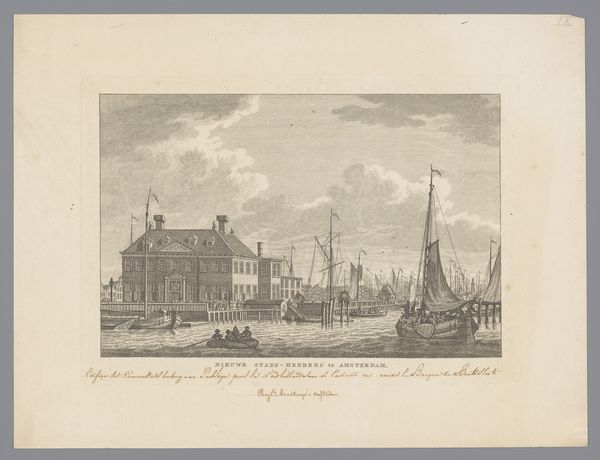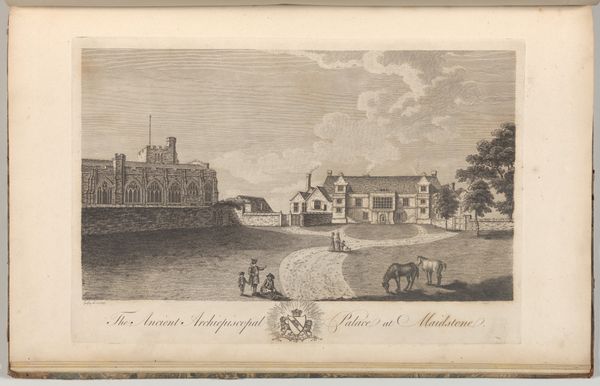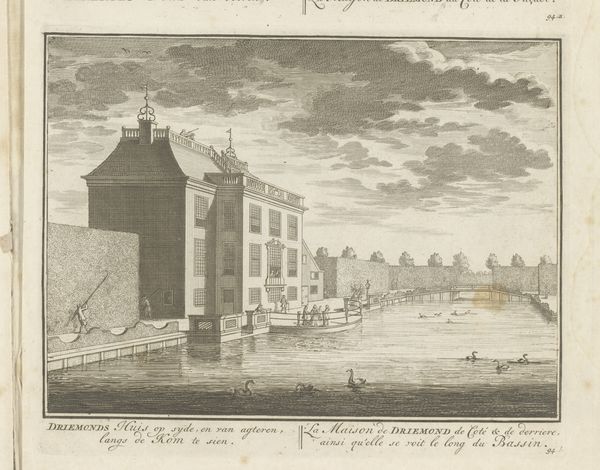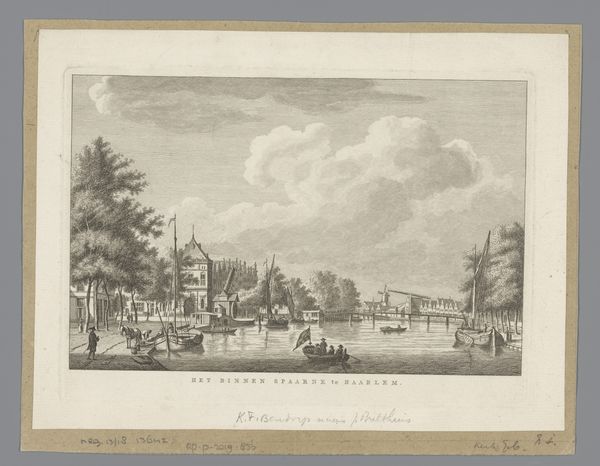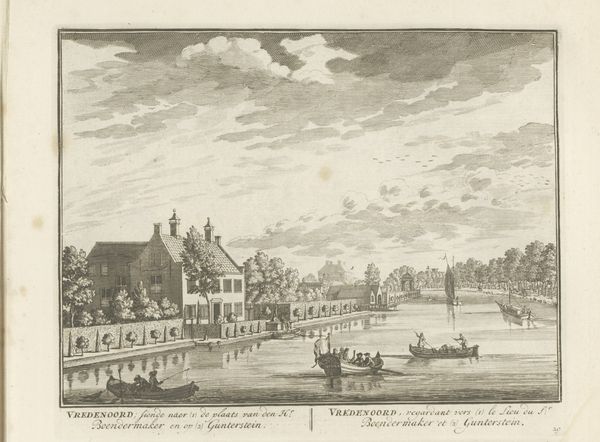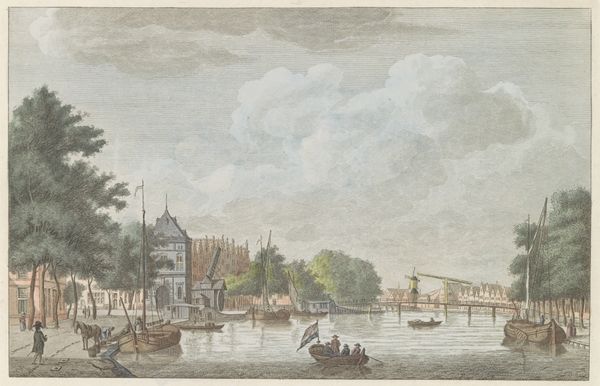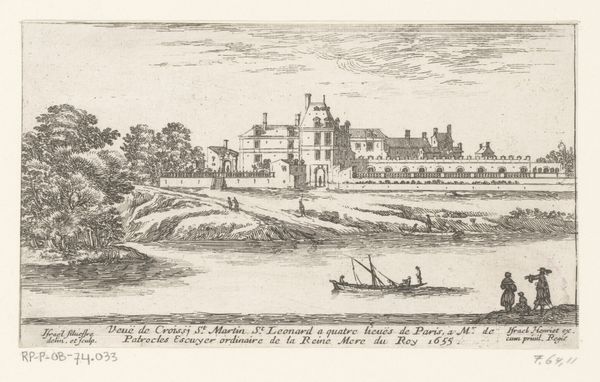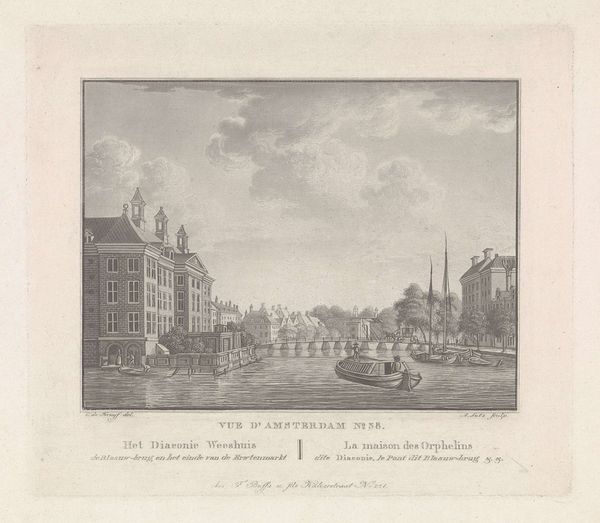
drawing, print, etching, paper, ink
#
drawing
#
baroque
# print
#
etching
#
landscape
#
river
#
paper
#
ink
#
cityscape
Dimensions: height 225 mm, width 210 mm
Copyright: Rijks Museum: Open Domain
Editor: This is *Gezicht op het stadsslot van Berlijn aan de rivierzijde* by Jan van Call, made between 1688 and 1698, using drawing, print, and etching techniques with ink on paper. I’m struck by how orderly and perhaps idealized it feels. What do you see in this piece beyond a pretty cityscape? Curator: The orderliness is indeed carefully constructed. Cityscapes, particularly those featuring royal residences like this Berlin Stadtschloss, were often commissioned to project power and stability. But let's look closer at what’s *not* being shown. Who benefits from this idealized image and whose realities are obscured? Editor: What do you mean? Are you suggesting it’s propaganda? Curator: The term "propaganda" might be too simplistic, but it is important to analyze its function. Consider the social hierarchies of the time. Royal patronage dictated artistic production. This isn't just a picture; it's a statement about authority and control. Are there visible signs of the working class, of poverty, of dissent? How might that affect our reading? Editor: So, by focusing on the grand architecture and calm river, it glosses over the lives of everyday people and reinforces the King's dominance? Curator: Precisely! And understanding that context allows us to view the artwork as more than just a pretty picture. It prompts us to question the narratives presented and whose voices are missing. Does this change your initial reaction to the piece? Editor: Absolutely! It makes me think about whose story is really being told, and the politics behind seemingly simple cityscapes. Thanks, that's a new way to look at this piece. Curator: Indeed. And perhaps more importantly, whose story should be told, both then and now?
Comments
No comments
Be the first to comment and join the conversation on the ultimate creative platform.
